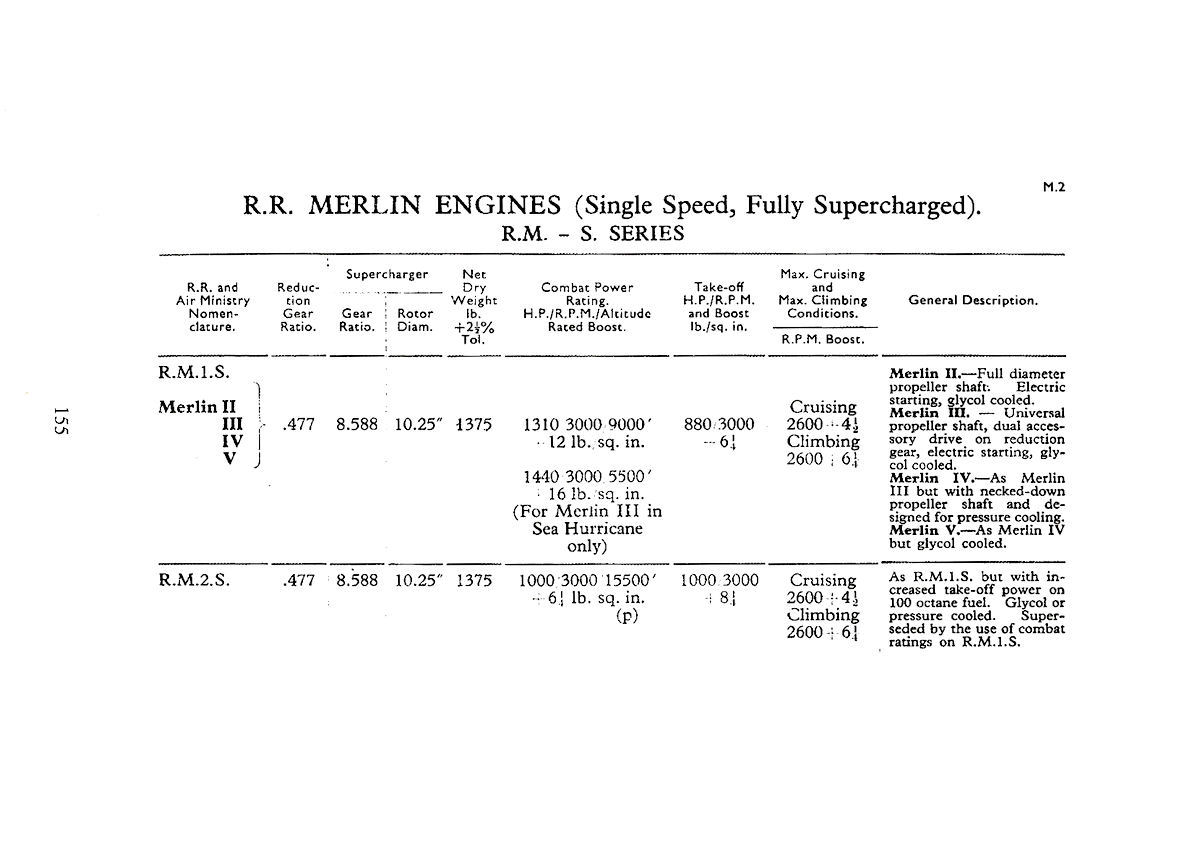
 |
|
#51
|
||||
|
||||
|
Quote:
In fact, the BCC-O was still limiting the 'natural' boost DOWN TO +12PSI by drilling a 3mil hole in there. It is also known fact that some pilots during Battle of France liked to put a matchstick into that hole getting +16PSI effectively on Waybridge prop Hurricanes, beating the hell out of the poor thing. No, I don't want that modelled, I just mentioned it because I find it interesting. Noone ever said the Spitfires were flying at +17PSI, even the +12PSI was restricted. The reason he mentioned it was TomcatVIP's post regarding overboosting I believe. Last edited by Robo.; 09-22-2011 at 07:21 AM. |
|
#52
|
||||
|
||||
|
Quote:
I really recommend reading any good book about this topic, ''Merlin in prespective'' is pretty much comprehensive and sheds a lot of light on how RR approached aircraft engines in that era compared to say DB - awesome reading. The +17PSI is not mentioned in any Spitfire book, this is simply a figure the Merlin III achieved (not safely mind you!) without limiting the boost to certain PSI considered as safe and giving the engine reasonable life. That PSI is called 'rated boost' and it was +6.25PSI for Merlin III until they rated it for +12PSI with better fuel. The +12PSI was not standard rating, but highest permissable for short periods of time. Simple as that. If you have any information about Merlin III being rated at +9PSI max, please provide, I quite like reading about engines. |
|
#53
|
||||
|
||||
|
Hehe I know what you mean, but please read what I wrote in context - I only mentioned the Speed Spitfire because it was relevant to the Merlin III overboosting (and the story is actually very interesting, RR lads were nuts!), but I hate the 25lbs Spits with passion in Il-2.
|
|
#54
|
|||
|
|||
|
Quote:
TC, help please |
|
#55
|
|||
|
|||
|
Brilliant..
|
|
#56
|
|||
|
|||
|
Quote:
 and the Sea Hurricane IC used 16lb boost in combat, but not in 1940. |
|
#57
|
||||
|
||||
|
Quote:
Enabling the boost on the ground (sea level) for example, would increase the Boost (manifold pressure) from +6.25PSI to +12PSI resulting in extra 270hp (cca) coming from your engine for the price of rising water temperature (obviously), engine wear etc (hence the restricted usage). The Boost would then consequently drop with rising altitude as per normal - exact figures depending on the given atmospheric conditions. The gain was most noticable down low, I can try to dig out approximate figures if needed. Almost double boost didn't mean double power mind you, the 3000RPM limit was still to be considered. What you expect to happen when ''you pull the plug''? At sea level - you can see the boost gauge reading above the +8PSI limit, you can feel and hear the engine working harder, you can see the water temp rising faster, RPM very much depending on the type of propeller used - but your Merlin III is giving you extra 270hp with all consequences. Hope that helped. |
|
#58
|
||||
|
||||
|
Quote:
Quote:
It is not intellectually honest to make the claim the engine was then capable of 2.2 ata. It was not capable of reliable operation at that boost level and that is reason it did not enter service. Same goes for the Merlin II and III. If you want to know what an airplane can do, check the latest edition of the Operating Instructions. That is what was approved and in use. No speculation required!! |
|
#59
|
||||
|
||||
|
Quote:
Sir, as stated before, the Spitfire Mk.I was flying at +12PSI Boost. The figure of +16PSI was only mentioned in a reply to TomcatViP regarding the overboosting of early Merlin engines. No one ever said that such a rating should be modelled for Spitfires Mk.I or Hurricanes Mk.I ingame! We're saying the same thing btw, no need to argue. |
|
#60
|
|||
|
|||
|
So it only took RR maybe 1-2 months to make the significant modification and test the engine at +16lb boost and obtain certification for that boost level. Not bad at all.
|
 |
|
|